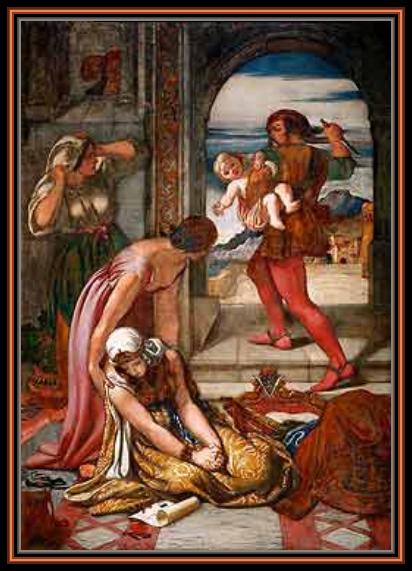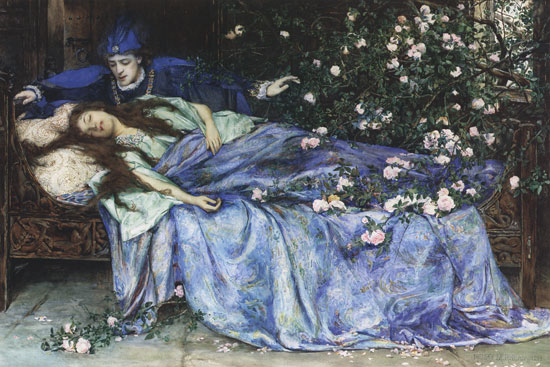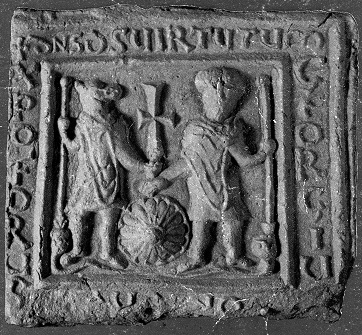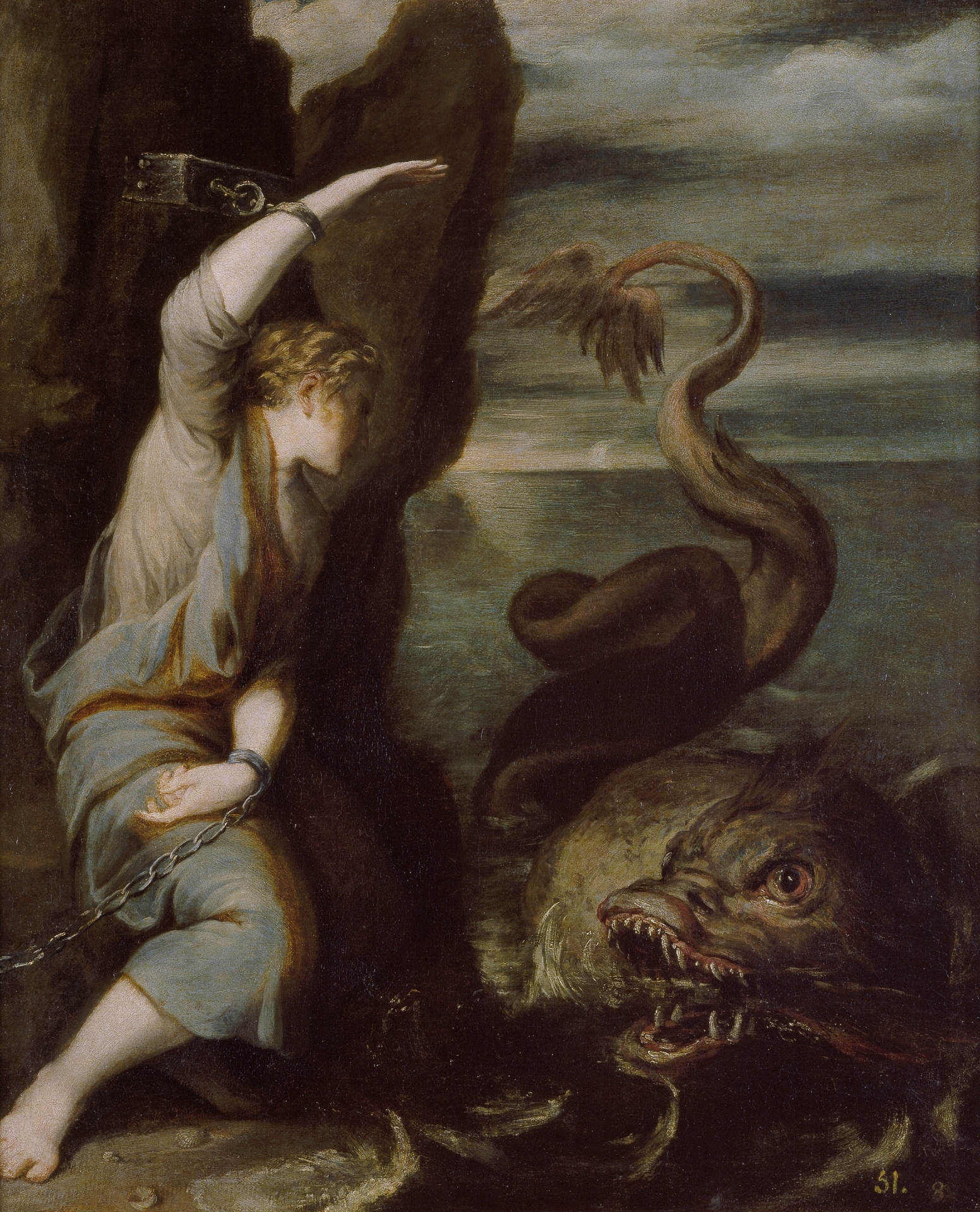|
Damsel In Distress
The damsel in distress is a recurring narrative device in which one or more men must rescue a woman who has either been kidnapped or placed in general peril. Kinship, love, or lust (or a combination of those) gives the male protagonist the motivation or compulsion to initiate the narrative. The female character herself may be competent, but still finds herself in this type of situation. The helplessness of these fictional females, according to some critics, is linked to views outside of fiction that women as a group need to be taken care of by men. The evolution of the trope throughout history has been described as such: "What changes through the decades isn’t the damsel (the woman is always the weak victim in need of the male savior) – it’s the attacker. The faces of the attacker in popular media are legion: monsters, mad scientists, Nazis, hippies, bikers, aliens... whichever group best meets the collective fears of a culture gets the role". Etymology The word "damse ... [...More Info...] [...Related Items...] OR: [Wikipedia] [Google] [Baidu] |
List Of Greek Mythological Figures
The following is a list of gods, goddesses, and many other divine and semi-divine figures from ancient Greek mythology and ancient Greek religion. Immortals The Greeks created images of their deities for many purposes. A temple would house the statue of a god or goddess, or multiple deities, and might be decorated with relief scenes depicting myths. Divine images were common on coins. Drinking cups and other vessels were painted with scenes from Greek myths. Major gods and goddesses Greek primordial deities Titans and Titanesses The Titan gods and goddesses are depicted in Greek art less commonly than the Olympians. File:Eos Memnon Louvre G115.jpg, Eos (Dawn) and the hero Memnon (490–480 BC) File:Ilion---metopa.jpg, Helios in his four-horse chariot (3rd century BC) File:0029MAN-Themis.jpg, Themis, from the Temple of Nemesis (ca. 300 BC) File:Antakya Arkeoloji Muzesi 02366 nevit.jpg, Oceanus wearing crab-claw horns, with Tethys ( Roman-era mosaic) File:Creation Promethe ... [...More Info...] [...Related Items...] OR: [Wikipedia] [Google] [Baidu] |
Petrarch
Francesco Petrarca (; 20 July 1304 – 18/19 July 1374), commonly anglicized as Petrarch (), was a scholar and poet of early Renaissance Italy, and one of the earliest humanists. Petrarch's rediscovery of Cicero's letters is often credited with initiating the 14th-century Italian Renaissance and the founding of Renaissance humanism. In the 16th century, Pietro Bembo created the model for the modern Italian language based on Petrarch's works, as well as those of Giovanni Boccaccio, and, to a lesser extent, Dante Alighieri. Petrarch was later endorsed as a model for Italian style by the Accademia della Crusca. Petrarch's sonnets were admired and imitated throughout Europe during the Renaissance and became a model for lyrical poetry. He is also known for being the first to develop the concept of the " Dark Ages".Renaissance or Prenai ... [...More Info...] [...Related Items...] OR: [Wikipedia] [Google] [Baidu] |
The Clerk's Tale
"The Clerk's Tale" is the first tale of Group E (Fragment IV) in Geoffrey Chaucer's ''The Canterbury Tales''. It is preceded by The Summoner's Tale and followed by The Merchant's Tale. The Clerk of Oxenford (modern Oxford) is a student of what would nowadays be considered philosophy or theology. He tells the tale of Griselda, a young woman whose husband tests her loyalty in a series of cruel torments that recall the biblical Book of Job. Plot The Clerk's tale is about a marquis of Saluzzo in Piedmont in Italy named Walter, a bachelor who is asked by his subjects to marry to provide an heir. He assents and decides he will marry a peasant, named Griselda. Griselda is a poor girl, used to a life of pain and labour, who promises to honour Walter's wishes in all things. After Griselda has borne him a daughter, Walter decides to test her loyalty. He sends an officer to take the baby, pretending it will be killed, but actually conveying it in secret to Bologna. Griselda, because of ... [...More Info...] [...Related Items...] OR: [Wikipedia] [Google] [Baidu] |
Chaucer
Geoffrey Chaucer (; – 25 October 1400) was an English poet, author, and civil servant best known for '' The Canterbury Tales''. He has been called the "father of English literature", or, alternatively, the "father of English poetry". He was the first writer to be buried in what has since come to be called Poets' Corner, in Westminster Abbey. Chaucer also gained fame as a philosopher and astronomer, composing the scientific ''A Treatise on the Astrolabe'' for his 10-year-old son Lewis. He maintained a career in the civil service as a bureaucrat, courtier, diplomat, and member of parliament. Among Chaucer's many other works are '' The Book of the Duchess'', '' The House of Fame'', '' The Legend of Good Women'', and '' Troilus and Criseyde''. He is seen as crucial in legitimising the literary use of Middle English when the dominant literary languages in England were still Anglo-Norman French and Latin. Chaucer's contemporary Thomas Hoccleve hailed him as "the firste fynder ... [...More Info...] [...Related Items...] OR: [Wikipedia] [Google] [Baidu] |
Sleeping Beauty
''Sleeping Beauty'' (french: La belle au bois dormant, or ''The Beauty in the Sleeping Forest''; german: Dornröschen, or ''Little Briar Rose''), also titled in English as ''The Sleeping Beauty in the Woods'', is a fairy tale about a princess cursed by an evil fairy to sleep for a hundred years before being awoken by a handsome prince. A good fairy, knowing the princess would be frightened if alone when she wakes, uses her wand to put every living person and animal in the palace and forest asleep, to waken when the princess does. The earliest known version of the tale is found in the narrative ''Perceforest'', written between 1330 and 1344. Another was published by Giambattista Basile in his collection titled ''The Pentamerone'', published posthumously in 1634 and adapted by Charles Perrault in '' Histoires ou contes du temps passé'' in 1697. The version collected and printed by the Brothers Grimm was one orally transmitted from the Perrault. The Aarne-Thompson classificat ... [...More Info...] [...Related Items...] OR: [Wikipedia] [Google] [Baidu] |
Snow White
"Snow White and the Seven Dwarfs" is a 19th-century German fairy tale that is today known widely across the Western world. The Brothers Grimm published it in 1812 in the first edition of their collection '' Grimms' Fairy Tales'' and numbered as Tale 53. The original German title was ''Sneewittchen'', a Low German form, but the first version gave the High German translation ''Schneeweißchen'', and the tale has become known in German by the mixed form ''Schneewittchen''. The Grimms completed their final revision of the story in 1854, which can be found in the in 1957 version of '' Grimms' Fairy Tales''. The fairy tale features such elements as the magic mirror, the poisoned apple, the glass coffin, and the characters of the Evil Queen and the seven Dwarfs. The seven dwarfs were first given individual names in the 1912 Broadway play ''Snow White and the Seven Dwarfs'' and then given different names in Walt Disney's 1937 film ''Snow White and the Seven Dwarfs''. The Grimm story, ... [...More Info...] [...Related Items...] OR: [Wikipedia] [Google] [Baidu] |
Rapunzel
"Rapunzel" ( , ) is a German fairy tale recorded by the Brothers Grimm and first published in 1812 as part of '' Children's and Household Tales'' (KHM 12). The Brothers Grimm's story developed from the French literary fairy tale of '' Persinette'' by Charlotte-Rose de Caumont de La Force (1698). The tale is classified as Aarne–Thompson type 310 ("The Maiden in The Tower"). Its plot has been used and parodied in various media. Its best known line is, "Rapunzel, Rapunzel, let down your hair". Plot A lonely couple, who long for a child, live next to a large, extensive, high-walled subsistence garden, belonging to a sorceress.), despite the common modern impression. The wife, experiencing pregnancy cravings, longs for the ''rapunzel'' that she sees growing in the garden (''rapunzel'' is either the salad green and root vegetable '' Campanula rapunculus'', or the salad green '' Valerianella locusta''). She refuses to eat anything else and begins to waste away. Her husband fe ... [...More Info...] [...Related Items...] OR: [Wikipedia] [Google] [Baidu] |
Fairy Tale
A fairy tale (alternative names include fairytale, fairy story, magic tale, or wonder tale) is a short story that belongs to the folklore genre. Such stories typically feature magic, enchantments, and mythical or fanciful beings. In most cultures, there is no clear line separating myth from folk or fairy tale; all these together form the literature of preliterate societies. Fairy tales may be distinguished from other folk narratives such as legends (which generally involve belief in the veracity of the events described) and explicit moral tales, including beast fables. In less technical contexts, the term is also used to describe something blessed with unusual happiness, as in "fairy-tale ending" (a happy ending) or "fairy-tale romance". Colloquially, the term "fairy tale" or "fairy story" can also mean any far-fetched story or tall tale; it is used especially of any story that not only is not true, but could not possibly be true. Legends are perceived as real within their ... [...More Info...] [...Related Items...] OR: [Wikipedia] [Google] [Baidu] |
Saint George And The Dragon
In a legend, Saint Georgea soldier venerated in Christianitydefeats a dragon. The story goes that the dragon originally extorted tribute from villagers. When they ran out of livestock and trinkets for the dragon, they started giving up a human tribute once a year. This was acceptable to the villagers until a princess was chosen as the next offering. The saint thereupon rescues the princess chosen as the next offering. The narrative was first set in Cappadocia in the earliest sources of the 11th and 12th centuries, but transferred to Libya in the 13th-century '' Golden Legend''.St. George and the Dragon: Introduction in: E. Gordon Whatley, Anne B. Thompson, Robert K. Upchurch (eds.), ''Saints' Lives in Middle Spanish Collections'' (2004). The ... [...More Info...] [...Related Items...] OR: [Wikipedia] [Google] [Baidu] |
Princess And Dragon
Princess and dragon is a archetypical premise common to many legends, fairy tales, and chivalric romances. Northrop Frye identified it as a central form of the quest romance. The story involves an upper-class woman, generally a princess or similar high-ranking nobility, saved from a dragon, either a literal dragon or a similar danger, by the virtuous hero (see Damsel in distress). She may be the first woman endangered by the peril, or may be the end of a long succession of women who were not of as high birth as she is, nor as fortunate. Normally the princess ends up married to the dragon-slayer. The motifs of the hero who finds the princess about to be sacrificed to the dragon and saves her, the false hero who takes his place, and the final revelation of the true hero, are the identifying marks of the Aarne–Thompson folktale type 300, the Dragon-Slayer. They also appear in type 303, the Two Brothers. These two tales have been found, in different variants, in countries all ... [...More Info...] [...Related Items...] OR: [Wikipedia] [Google] [Baidu] |
Perseus
In Greek mythology, Perseus ( /ˈpɜːrsiəs, -sjuːs/; Greek: Περσεύς, translit. Perseús) is the legendary founder of Mycenae and of the Perseid dynasty. He was, alongside Cadmus and Bellerophon, the greatest Greek hero and slayer of monsters before the days of Heracles. He beheaded the Gorgon Medusa for Polydectes and saved Andromeda from the sea monster Cetus. He was the son of Zeus and the mortal Danaë, as well as the half-brother and great-grandfather of Heracles (as they were both children of Zeus, and Heracles' mother was descended from Perseus). Etymology Because of the obscurity of the name "Perseus" and the legendary character of its bearer, most etymologists presume that it might be pre-Greek; however, the name of Perseus's native city was Greek and so were the names of his wife and relatives. There is some idea that it descended into Greek from the Proto-Indo-European language. In that regard Robert Graves has proposed the only Greek derivation avai ... [...More Info...] [...Related Items...] OR: [Wikipedia] [Google] [Baidu] |










